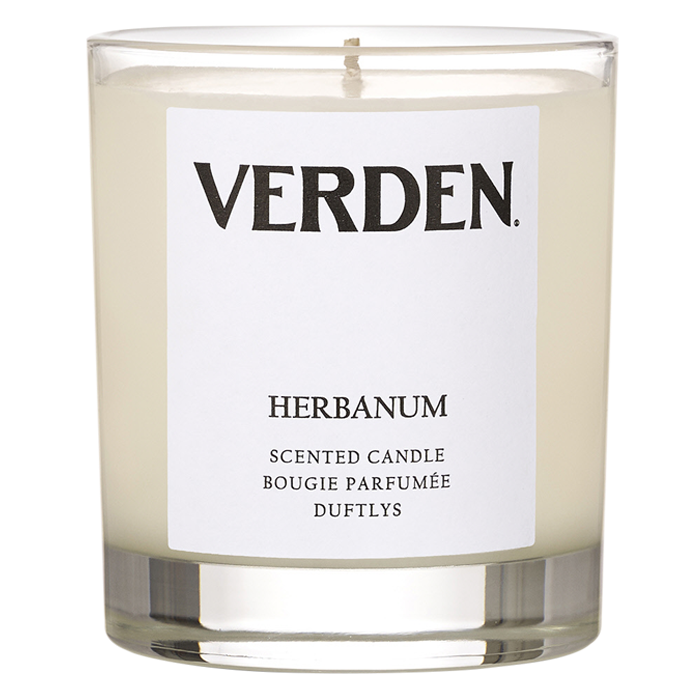Julia Roberts in ‘Eat Pray Love’ © Alamy Stock Photo
When I walked into Victoria Beckham’s studio late last year, the signs and signifiers of an aspirational space were all there. There was the plush velvet sofa, a giant amethyst geode atop a coffee table, and a champagne cooler-sized Diptyque candle with a decadent three wicks. It was the candle that sent the strongest message of luxury, with its expensively authentic aroma of moss, blackcurrant and fig leaves. In the fashion world, the unspoken accessory of every event is the delicious scent.
It was a different story, however, when I walked into my house later that day, and the unique bouquet inside revealed itself with new olfactory objectivity: decidedly domestic notes of fishfingers, children, cats, newsprint, lavender, wax, wellies, bike tyres, and maybe a tiny hint of soap buried in the mix. In the same way that one only notices marks on the paintwork after inviting people round, my nostrils had been opened to the true scentscape. Time to give up the goal of having a house so clean it had no odour and at least engage with the candle-erati.
Scented candles have become a status symbol, a conduit for self-expression and a mood enhancer. Notably, two descendants of Sigmund Freud — Martha Freud and Bella Freud — have both marketed candles. Selfridges’ London store has seen a 12 per cent uplift in candle sales over the past year and has doubled the size of its “candle destination”, which stocks more than 850 varieties, from a £900 10kg Soho Home candle to Paul Smith’s stylish new line.
There’s also a proliferation of hip candlesticks, incense, and borderline mad-inventor methods of diffusing scent such as Byredo’s Olfactive Stéréophonique, inspired by speaker design. Your home can smell of tomatoes, snow or even an Old Master painting by Osias Beert the Elder, thanks to Sotheby’s and Lyn Harris.

Skandinavisk Ro, £35, johnlewis.com

Diptyque Odour Removing Candle with Basil, £54, diptyqueparis.com
I like the idea of my home being enrobed in a mysterious, intense fragrance evoking a sophisticated inhabitant who wears a velvet dressing gown to mist their plants by moonlight. Or perhaps a complicated intellectual aroma suggesting someone who sits cross-legged on their polished concrete floors to read European literature and doesn’t own a TV. Sadly, rich scents make me feel queasy at home. And scentscaping is up there with ironing sheets as a domesticated step too far.
Granted, fragrance tastes are subjective, but there are common themes in what people are seeking out and why. Heather Gilberthorpe Pell, who founded handmade candle company Lit in 2020, tells me her customers are “leaning into deeper, warmer fragrances — earthy, woody notes such as vetiver and frankincense, in contrast to last winter when our more popular choices were florals”. She attributes the shift to “global uncertainty . . . many of us are turning inward for calm, perhaps unconsciously choosing scents which are grounding and comforting”.

Verden Herbanum, £55, selfridges.com

Paul Smith Botanist, £65, Paulsmith.com
At Selfridges, homeware buying manager Eleanor Gregory has seen a trend for “green herbal notes, anything suggestive of a fresh garden has been popular”, while Niko Dafkos, co-founder of London-based lifestyle brand Earl of East, reports that earthy scents are trending, such as its best-selling Shinrin-Yoku, a blend of cedarwood, oakmoss and black pepper.
What about for 2023? As with fashion, multiple themes are likely to coexist. Emma South, Jo Malone London’s fragrance and lifestyle expert, says that “gourmand, vanilla-rich scents have been enjoying a resurgence”, while Diptyque UK managing director Amanda Morgan sees the popularity of earthy and herbal scents continuing, “like the smell of petrichor [the scent created after rainfall] . . . or more clean herbal scents like fig tree or verveine to create a clean, fresh environment, making the space feel open and more harmonious”. Gregory envisages “warm, soft summer scents such as tuberose, orange blossom and jasmine” becoming bigger, while Gilberthorpe Pell expects a “deep delve into green . . . light, open and uplifting blends”.
Earthy and green I can do. And I’ve sniffed out some scents for those who like subtlety in their space: Sunspel’s forthcoming Sea Moss, which perfumer Lyn Harris created to evoke the British coast by combining wildflowers, cedars and a salty breeze, and Diptyque’s new The Odour Removing Candle with basil, mint and tomato leaf. Skandinavisk has some of the most evocative yet unintrusive scents around, particularly Ro, which combines the soft soapiness of violets with cut grass and fallen leaves.

Earl of East Shinrin-Yoku, £20, earlofeast.com

Carrière Frères Tomato, £50, selfridges.com
Concerned about the indoor air pollution candles create, I asked Nicola Carslaw, professor of indoor air chemistry at the University of York, for her view. “Those scenes in movies where someone has 20 scented candles around a bath look really romantic, but if you are in a small space for a long time with the window shut you could start to build up higher concentrations [of pollution particles],” she says. “It’s about moderation: if you are going to burn one, fine — but don’t burn 20 and don’t do it in a small, unventilated space.”
Then there’s the risk of setting fire to your house — I know several friends who have accidentally ignited curtains or pictures — so I might go for room spray, or stick to the tried and tested ritual of lighting a candle five minutes before anyone comes round, vigilantly guarding the naked flame, blowing it out when the doorbell rings and hoping that’s enough to make my home smell of a walk in a mossy ancient woodland after the rain or a Mediterranean evening under a fig tree. With a top note of cat.
Find out about our latest stories first — follow @financialtimesfashion on Instagram
[ad_2]
Originally Appeared Here